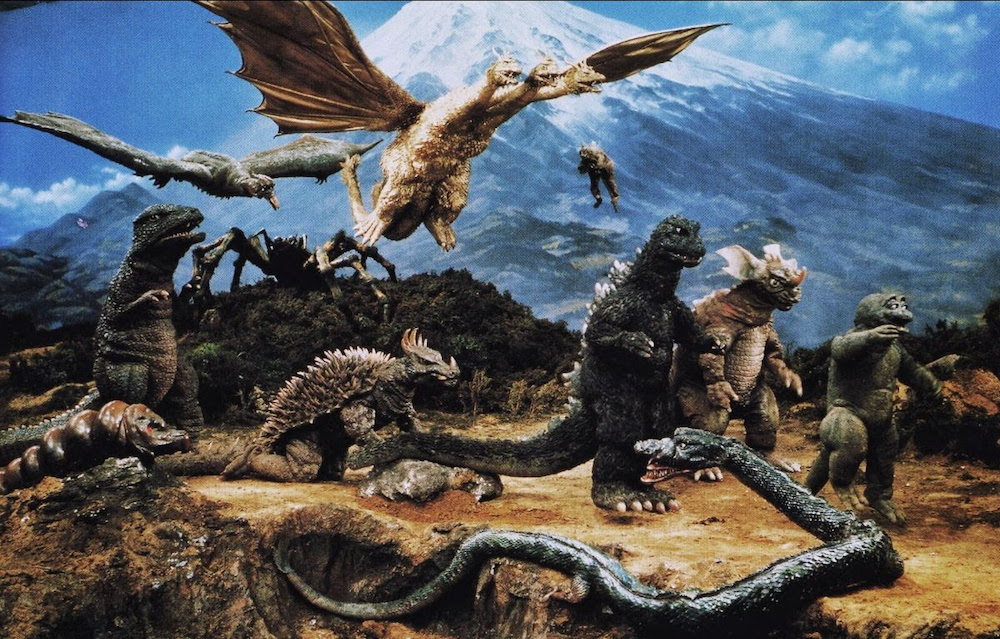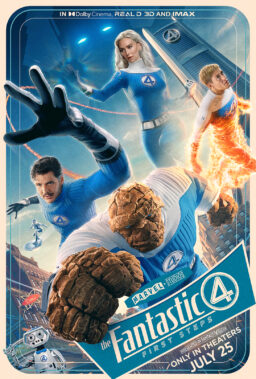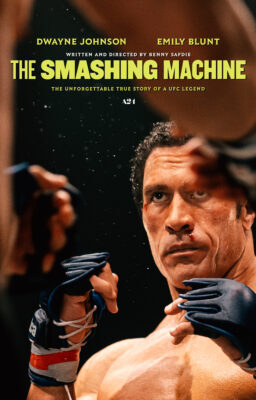Like many Gen-Xers, I think my first exposure to Godzilla movies was on local broadcast channels filling their weekend matinee slots with old Westerns and Showa-era kaiju flicks. I know I had seen most of them as a kid before revisiting them the last few years as Criterion restored 15 of them (from 1954-1975) to a glory undreamed of by us back in the ’80s in our footie pajamas eating bowls of cereal bathed in the flickering, cathode ray glow of them. Watching them as an adult, certain images like Godzilla’s oddly inflexible, trunk-like legs and sounds like his metallic/bestial shriek would serve as, without warning, mnemonic triggers to all manner of strange emotions. They’re like the smell of your mother’s perfume or a song you hadn’t heard since that one special summer day before everything went wrong. They are rabbit holes trailing back to a rich psychic melange: the first whiff of existential fear from the film’s apocalyptic images of cities on fire; a still-unrequited longing for a monster-familiar with which only you in your shared loneliness could communicate; the disquiet over the uncanny valley of the ingenious, but obviously artificial environmental and creature effects.
My favorite of all Godzilla movies as a child is still my favorite as an adult, Ishirō Honda’s “Destroy All Monsters” (1968), the seventh of eight Godzilla films directed by Honda, who also directed the first of these films in 1954. It’s rare that something thought to be grand in youth holds something other than merely nostalgic value when viewed through a more mature lens. But Godzilla films, in general, have a built-in subtext that makes them stickier the more life you’ve lived, stronger the more history you know. What I’m saying is that Godzilla movies get better as you get older.
The original Godzilla film, after all, was intended as a sober survival metaphor in which a monster, sporting radiation scars patterned after victims of the nuclear bombings of Nagasaki and Hiroshima, is awakened by American nuclear testing to lay waste to Tokyo in an incendiary attack very much like the one the Allies perpetrated against the capital during the last days of WWII. In 1954, Japan was only nine years removed from the leveling of their cities and only two years removed from the Treaty of San Francisco, effectively ending America’s direct involvement with the administration of Japan’s civic affairs. It ended America’s occupation of Japan, but it didn’t heal the island’s national cultural identity, which split between a distinct nihilism in its horror films; an entire genre of Western-fetishized futurism; and an exaggerated, some would say incongruous “cuteness” in its mainstream cultural artifacts.

That admittedly reductive polarity in Japanese pop culture is everywhere in the Godzilla films, which vacillated from a grim post-war parable to metal versions of Godzilla and colonies on the moon, to adorable “Son of Godzilla” shenanigans featuring a bumbling, ape-like rubber “baby” who provided broad slapstick routines and sickly pathos in interminable interludes. He’s the Scrappy-Doo of the series, and I hated him as such. Looking at them as a whole, however, the 15 films of the so-called “Showa Era,” named after a political period in which cowed and diminished Emperor Shōwa (known as “Hirohito” in the West) maintained his reign from 1926-1989, followed the arc of the Reigning Emperor’s time in office from the architect of the genocidal Second Sino-Japanese War to quisling figurehead for Gen. Douglas MacArthur’s occupation of Japan.
The Godzilla movies likewise began in rage and fire. They ended with Godzilla as an ally of the Japanese, fighting alongside them against all manner of foreign intrusion for the cause of national unity. Godzilla became a source of nationalistic pride for Japan, a symbol of perseverance and rebellion, a flag to follow, and an ally born of the things that had been done to the Japanese people. I’m fascinated by him in the same way I’m disturbed by America’s superhero kink: yes, they save us from city-destroying bad guys, but they destroy the cities in the process. Watching Godzilla movies for an American will always be colored by the knowledge that they are about the trauma we inflicted on the Japanese people under the aegis of a draconian leader setting up his people for nauseating retribution. Watching them as a Chinese-American is even more fraught for the knowledge of what the Japanese army did to us under orders of their leadership.
No single Showa Era Godzilla film crystallizes all of the manifold complexities of these films as well as “Destroy All Monsters.” Even the scorched earth of its title promises a final reckoning, a collective exorcism of these creatures of the Id.

An extended opening narration places “Destroy All Monsters’” in “1999” (the end of the millennium is a traditional marker for periods of great transition), in which a Japanese-led United Nations has established rocket colonies on the moon and earth. They have solved the kaiju problem by quarantining them to an island dubbed “Monster Land,” segregating them there with gaseous barriers designed (with pheromones?) to keep them, organically, even gently, to their respective bailiwicks. These emblems of postbellum Japanese nationalism—not unlike our roster of superheroes post-9/11—are finally under the control again, if only temporarily, of a unifying collective identity. It feels very much like a metaphor for trauma survivors learning how to compartmentalize their monstrous triggers, thus managing their outsized, aggressive responses.
The peace is short-lived. The monsters break free of their confinement and destroy major cities worldwide. Rodan destroys Moscow, Baragon levels the Arc de Triomphe (and all of Paris), Mothra gets Beijing, Manda lays waste to London, and Godzilla has the pleasure of taking Manhattan. Is “Destroy All Monsters” a story now of the Japanese losing control of their barely-repressed grievances to the dismay of all the world? It turns out it’s a different fantasy of victimization and empowerment. The monsters have been freed and are now under the control of an alien race of silver-jumpsuited Kilaak who have secretly established a base of operations in Tokyo. The unwelcome alien occupiers of the Japanese home island use the kaiju as leverage to keep them in power, turning these manifestations of Japan’s subsumed humiliation against itself. Traitors to the human cause turn out to have been mind-controlled with little silver beads embedded behind their ears—a call-out perhaps to Robert Heinlein’s The Puppet Masters (1951), which, like “Destroy All Monsters” could also be read as a paranoid thriller about the insidious creep of communist “sleeper cells” conspiring to bring down the nations of the world from the inside. It’s up to a small band of Japanese freedom fighters to wrestle back control of Japan’s weapons of mass destruction—its monsters. Their successes lead to a final battle between Earth’s menagerie of champions, the alien’s three-headed King Ghidorah, and a UFO cloaked in pink fire.
I love this movie for its brightly-colored palette and its similarly-dazzling web of intricate socio-political signs and signifiers. With verve and invention, it says a great deal about the Japanese national character: how it sees itself on the world stage as it enters the 1970s, a sleeping giant that should be praised for its industry and restraint. The Showa Era Godzillas are each cathartic, a series of films seen as camp in the West, but greeted with sobriety and tears upon the 1954 Japanese debut of the first picture. Not helping its perception on these shores is the “American cut” of “Godzilla” that inserted Raymond Burr in a framing story to recenter the West as protagonists in a film about a trauma of America’s specific making. This diminishment of Godzilla is a particularly cruel knife, an American re-colonization of a quintessentially Japanese story about their colonization by the Americans. In this context, I think too about the brief conclusion of Steven Spielberg’s “Jurassic Park: The Lost World,” in which a T-Rex is loose in San Diego and terrorizes a group of Japanese tourists.
Godzilla films in the Showa Era are a joke in the United States, but they shouldn’t be. “Destroy All Monsters” is the pinnacle of these pictures, a monster team-up movie that carries the history of American/Japanese relationships during WWII and its immediate aftermath. When Godzilla rips out the Kilaaks’ center of power to halt the aliens’ fire-bombing of Tokyo—with a trio of Kilaak collapsing beneath the rubble like players in a Kurosawa jidaigeki—it’s more than this Mario Bava-colored epic spectacle of monsters and extraterrestrials battling it out for the fate of the world. It’s a significant cultural marker created during a period of creativity in which the world’s uncertainties were expressed through the movies. It’s a masterpiece.
The Japan Society, as part of the Tribeca Film Festival’s “Escape from Tribeca,” presents a 55th-anniversary screening of “Destroy All Monsters” at the Screen at Japan Society on Friday, June 16 at 7:00pm EST. Any opportunity to see this film on a large screen is a precious one. Go.












